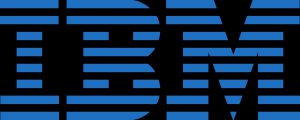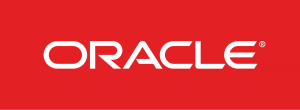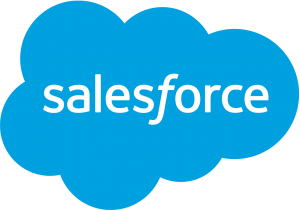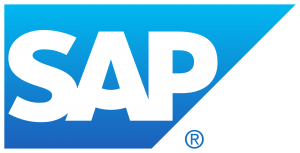Software vendor financial results #2 (Autodesk, IBM, Oracle, Salesforce, SAP, VMware)

Software vendor financial results can be more interesting for ITAM & SAM managers than they might first appear. Looking at how the software vendors are performing on a quarterly and annual basis can give the savvy organisation some good insight. Who is likely to increase audits? Where might good discounts be found? What upcoming business model changes might impact us? Hints to potential answers for questions like this, and more, can be answered by taking a look at the vendor’s results. Those who have reported results for a 2020 period are already showing the impact of the Coronavirus outbreak.
In this article, we look at the most recent results for:
See part 1, where we look at other key vendors including Amazon AWS, Microsoft, and ServiceNow, here.
Autodesk

FY20
AutoDesk reported overall revenue of $3.3 billion with 4.9 million subscriptions, 25% (non-GAAP) operating margin, and a cash flow increase by just over $1 billion to $1.36 billion. Q4 billing was $1.5 billion, a 43% increase YoY, and over 1/3 of the annual total – a very strong quarter. They stated that subscriptions now equate to 85% of their business.
They saw strong growth across product categories and regions, with growth between 26% – 31% across Americas, APAC, and EMEA. It seems clear that Autodesk’s policies to move their client base across to subscription licensing is working well for them – is it working as well for their customers I wonder? This feels, to me at least, reminiscent of Adobe’s move to Creative Cloud back in the day.
Audits
Audits aka “monetizing non-paying users” is fairly decent revenue stream for Autodesk. They signed 62 license compliance deals over $500,000, of which 14 were over $1,000,000 – meaning a minimum of $38,000,000 revenue from audits, plus however many they closed under that half a million mark. They note that “almost 20%” were in China. I find it a little surprising to see a vendor call this out so clearly in their financial results – but perhaps it’s refreshing?!
What does this mean for ITAM?
It’s apparent that Autodesk audits are happening and sticking organisations with pretty hefty bills – take this as a sign that reviewing your Autodesk estate should be higher up your list that you might initially have thought.
Further Reading
Earnings results
Autodesk licensing changes
IBM

FY19
Total revenue for the financial year of $77.1 billion, which is 3.1% down from 2018 (although Q4 FY19 saw an increase in revenue for the first time in five quarters) and net income was up 8.1% to $9.4 billion. Cloud revenue for the year was up 11% to $21.2 billion – this product area includes the Red Hat acquisition.
Q1 FY20
Revenue for the first quarter was $1.18 billion, which is a 26% year-on-year decrease. CFO Jim Kavanaugh stated they were tracking roughly in line with their FY20 expectations through February but, of course, saw a radical change once the COVID-19 situation became more serious in March.
What does this mean for ITAM?
Nothing major to shout about in their FY19 financial results – something that Arvind Krishna will be keen to change. As former head of IBM’s cloud division, and the spearhead for the Red Hat takeover, Krishna will be looking to make IBM a strong player in the IaaS cloud space – perhaps snatching the 3rd place spot from Google. If you’re an IBM customer, I’d expect to see a push around cloud throughout 2020 and beyond – it could be that IBM audits will start to position their cloud offerings as the way to resolve any shortfalls.
New CEO Arvind Krishna gave an insight into their future strategy on the Q1 FY20 earnings call, saying they will continue to acquire companies, and also continue to divest parts that don’t align with their focus areas. As we saw when IBM offloaded BigFix and purchased Red Hat, these events can lead to uncertainty when it comes to renewals, licensing metrics, contracts etc. – keeping an eye on changes to your software portfolio in relation to IBM will be a good idea throughout 2020/2021.
Further Reading
IBM 2019 Annual Report
Bloomberg article on Arvind Krishna
Oracle

Q3 FY20
Oracle reported their Q3 2020 earnings and highlights include:
- Total revenue of $9.8 billion – a 2% YoY increase (3% in constant currency)
- Operating Income of $3.5 billion – a 4% increase
- Cloud Services & License Support revenue of $6.9 billion – which is a 4% increase
- Cloud License & On-Premises License revenue was $1.2 billion
- Fusion ERP Cloud revenue up 37%
- NetSuite ERP up 26%
These are building on very similar numbers in the preceding two quarters of FY20.
Safra Catz said “Our Cloud Services and License Support business, basically our subscription business, which includes SaaS, IaaS and software updates…accounted for nearly 71% of total company revenues”. It’s interesting to see Larry Ellison yet again talking up the wonders of the Oracle Autonomous Database and also claiming “thousands of customers”.
How does this all tie in with the earlier announcement that Oracle are shedding 1,300 jobs in Europe? While not necessarily a sign of long-term decline – let’s not forget Microsoft went through a series of layoffs a few years ago – it does surely signify an internal re-structuring at least?
What does this mean for ITAM?
I would expect more of the same from Oracle – same audit tactics, same pushing of cloud sales, same touting Autonomous Databases – as they continue to struggle to gain relevancy in the cloud space. As we come up to their end of financial year on May 31st, even in the midst of the COVID-19 pandemic, make sure everything is as it should be.
Further Reading
Oracle announcement
Seeking Alpha call transcript
Salesforce

FY20
Total revenue for the year was $17.1 billion, up 29% YoY – which is very good growth, particularly with $16 billion as subscription and support.
In February 2020, Salesforce bought Vlocity, a company that builds industry specific software on the Salesforce platform, for $1.33 billion. This seems to indicate that Salesforce are looking to increase their vertical focus – if your organisation sits in:
- Communications
- Media & Entertainment
- Energy & Utilities
- Insurance
- Health
- Government
Expect to see an increase in Salesforce activity. The same goes for any organisations using Tableau as Salesforce will surely start to bring that into the fold during FY21.
What does this mean for ITAM?
Salesforce management has its quirks when compared to many other software packages so, as always, be sure you understand your environment and how it is being used to prevent unexpected “over-usage” bills. Particularly if you’re in the above sectors, you may find new add-ons being introduced that bring their own limits and quotas to be monitored. Equally, if you use Tableau – start to get a grip on who uses it and whether it’s all actually required.
Further Reading
Financial year results
Vlocity purchase
SAP

FY19 & Q1 FY20
SAP finished FY19 with cloud revenue up 39% and total revenue up 12% to €27.63 billion. Cloud revenue was just shy of €7 billion, software licenses down 2% YoY at a little over €4.5 billion, and software support just over €11.5 billion. They claimed over 13,800 “licensed customers” of S/4 HANA cloud & on-premises, with some big-name logos including Roche, Ford, BBC, and Vodafone.
The first quarter of 2020 saw SAP cloud revenue grow by 29% year-on-year (YoY) to just over €2 billion, while software license revenue was down 31% YoY to €0.45 billion. SAP attribute the bulk of that drop to the COVID-19 coronavirus pandemic.
What does this mean for ITAM?
It seems likely that many of the big digital transformation projects will be stalled during the current economic uncertainty and it’s clear that SAP’s revenues are being impacted. Might this mean a further focus on audits as a proven way to find additional revenue? I’d suggest that reviewing your SAP licensing – particularly any indirect access style scenarios – is something to do sooner rather than later.
Further Reading
VMware
![]()
FY20
VMware posted revenue of $10.81 billion for FY20, a 12% year-on-year increase and CFO Zane Rowe highlighted a record number (31) of enterprise agreements “over $10 million” being signed. Subscription & SaaS made up $1.88 billion of that, which is a 44% YoY increase. VMware now report a category of “subscription & SaaS revenue” which is a combination of:
- Licenses
- Subscription
- SaaS
- Services
This includes VCPP consumption-based offerings, Workspace ONE SaaS elements, VMware Cloud on AWS, Carbon Black, and other subscription-based offerings – including the newly acquired Pivotal.
VMware CEO Pat Gelsinger touted that, following the acquisitions of Heptio and Pivotal, VMware now touch “almost every portion of a CIO’s budget”. VMware are now much more than a traditional virtualization company – Heptio & Pivotal power the new offering “Tanzu” which is aimed at building, running, and managing application software , “Project Pacific” is focused on making vSphere a Kubernetes native platform, and Carbon Black (another recent acquisition) enables multi-cloud security and more.
What does this mean for ITAM?
VMware are often overlooked by ITAM teams and grouped into Tier 2 or Tier 3 vendors. However, VMware are generally pervasive throughout an organisation already and the above shows that is something they aim to increase. A vendor whose product supports some/all of your on-premises virtual infrastructure – servers, storage, and networking, Kubernetes deployments, cloud security, virtual desktops, and more is critical to business operations. While they’re not as known for audits as some other vendors, the more products VMware introduce into your environment the more chance there is for non-compliance and audit penalties.
Understanding VMware licensing and contracts is important, as is getting a full picture of all the VMware software in use within your organisation.
Further Reading
BusinessWire overview
VMware announcements
Can’t find what you’re looking for?
More from ITAM News & Analysis
-
Broadcom is removing expired VMware licences from its portal - take action now!
Hot on the heels of Broadcom’s announcement of the end of perpetual licences for VMware it has given customers barely a week to download any keys for licenses from its portal with expired support. This is ... -
Who Loses When Broadcom Wins?
News of a new Broadcom deal rarely arrives with great fanfare. The November 2023 VMware acquisition provoked open worry online and in business circles, with many critics wondering whether the former Hewlett-Packard spinoff’s reputation would prove ... -
Software Vendor Insights: What do the numbers tell us about the opportunities for ITAM negotiations?
What software vendor insights can be gained from the latest financial results from Amazon, Google, Broadcom, Salesforce, IBM and SAP? An important part of ITAM is paying close attention to the health of the companies we ...